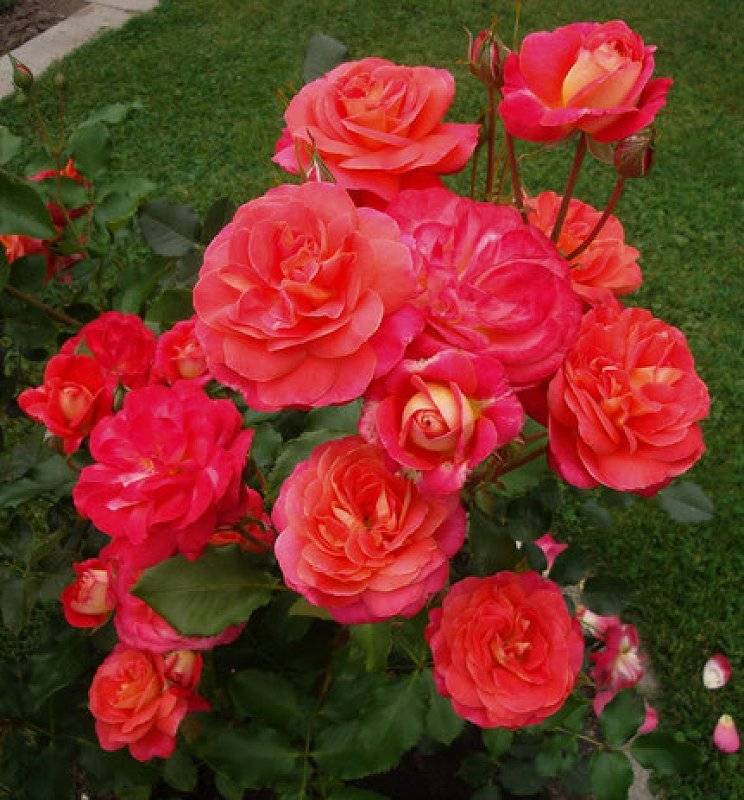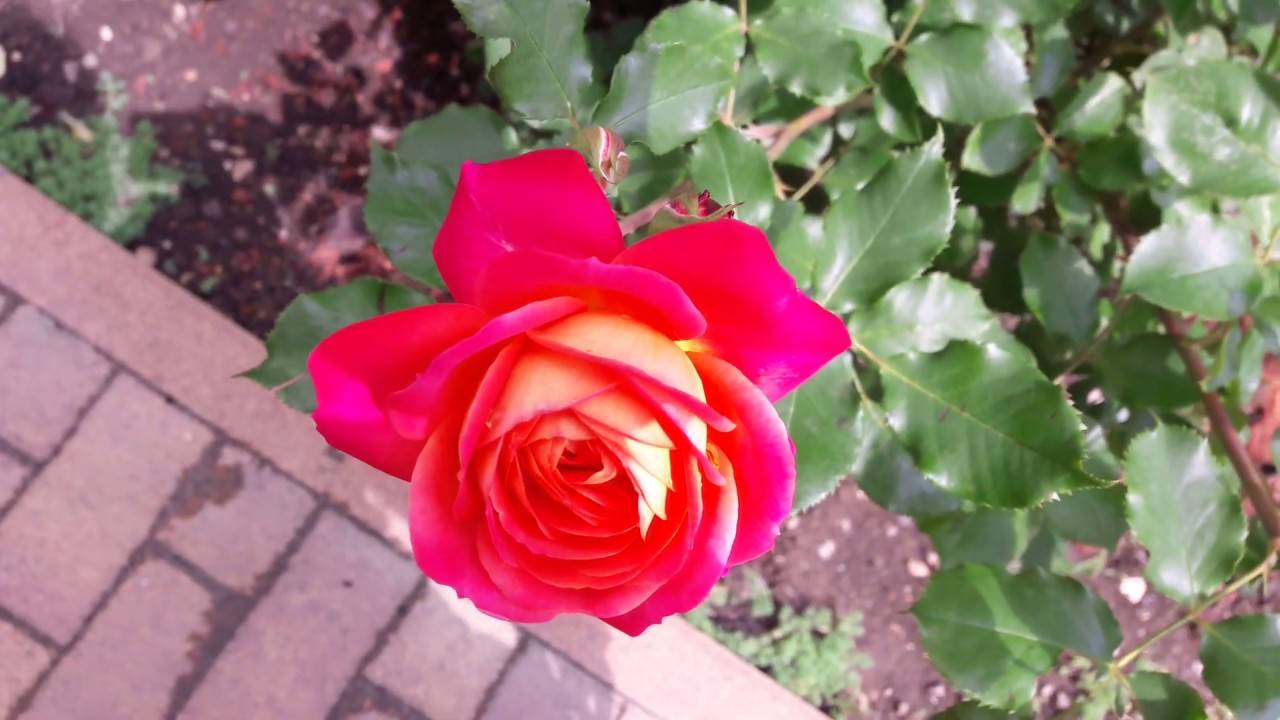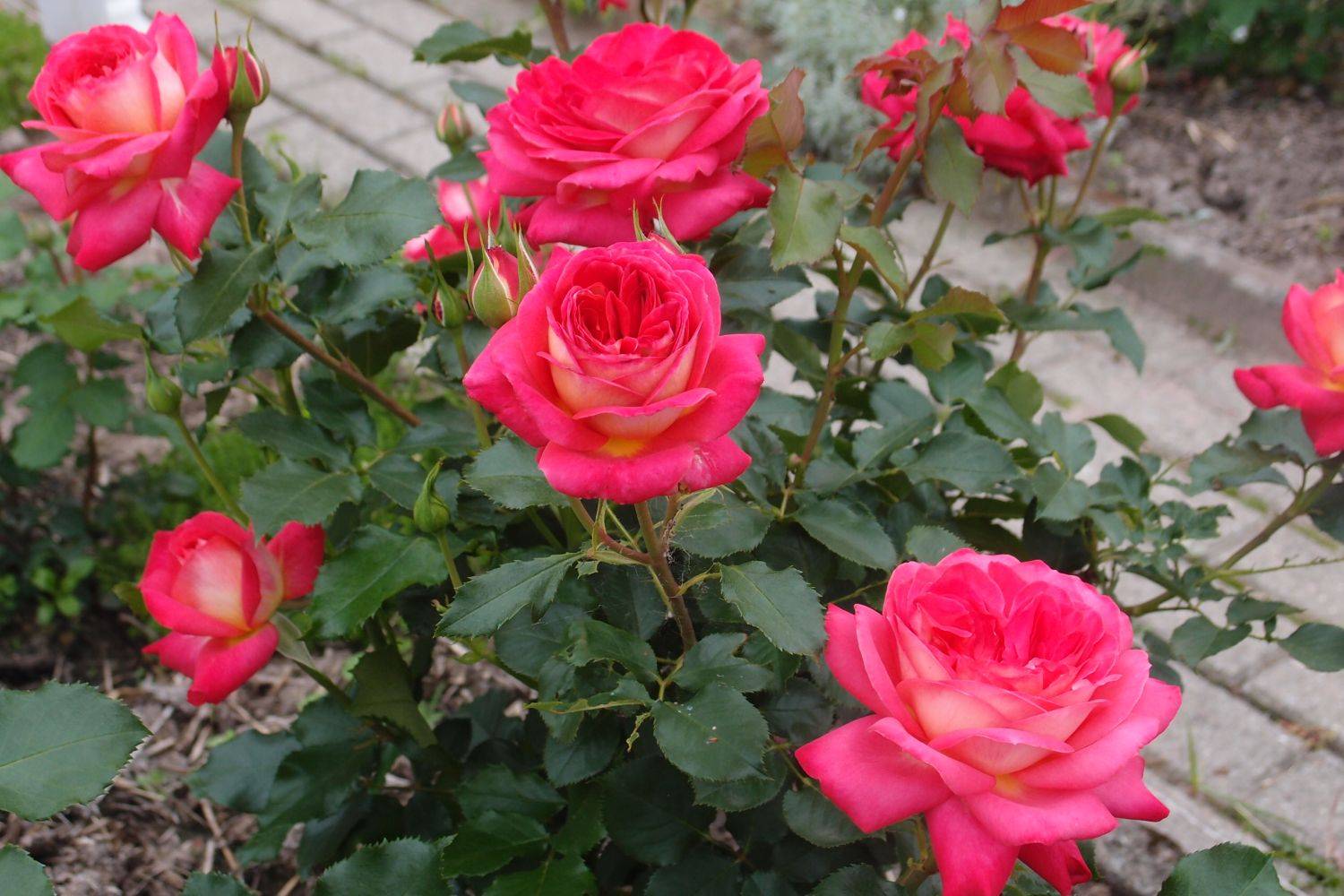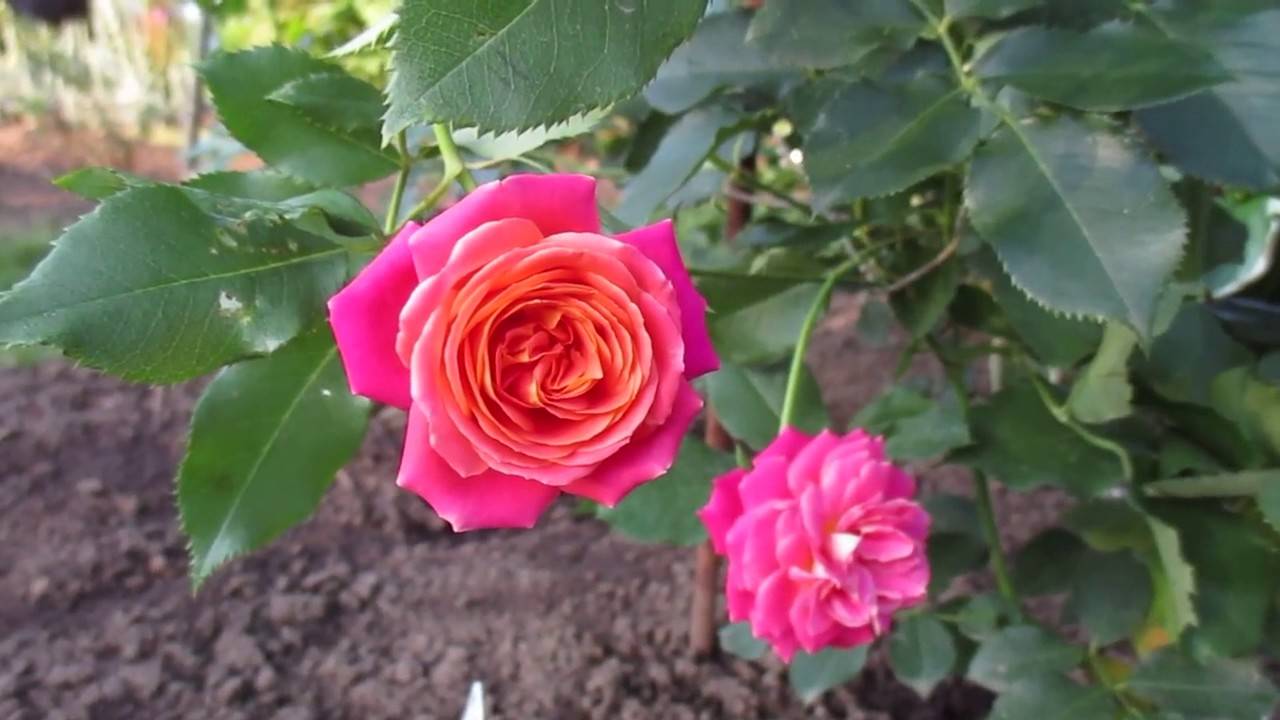Rose Midsummer (Midsummer) - what kind of variety, description
Content:
The Midsummer rose is one of the most attractive of all varietal rose bushes. Large double flowers of bright red color and an unsurpassed aroma cause admiration and delight, they have a special charm and will become the center of attention on the site.
Rose Midsummer - what is this variety
Rose Midsummer was bred in 2007 in Germany (in the Tantau nursery). It was obtained by crossing tea, nutmeg and polyanthus roses, were reckoned to the floribund group. Like all plants of this group, the floribunda Midsummer rose is compact in size, forms flowers in clusters, and blooms for a long time. It has an unusual color scheme.
Brief description and characteristics
The plant has high decorative qualities. The height of the bush is 90-110 cm, the diameter of the crown is from 50 to 70 cm. The stems are erect, slightly branched, the branches are elastic and strong. The leaves are elongated and dark green in color with a matte sheen, they are covered with a waxy coating. Each shoot grows up to 5 flowers.
The plant blooms from early June to late October. Beautiful double flowers are 5-8 cm in size. The rose of this variety is distinguished by bright yellow-red-orange shades. The center of the flower rises above the edges of scarlet, crimson, cherry or pink. The interior of the rose has a golden or cream color. The buds are formed in inflorescences of 4-13 flowers each. The buds are spherical or cup-shaped. Each flower has 30-40 petals, they retain their shape well and do not lose their attractiveness.
Advantages and disadvantages of the variety
Like every variety, the Midsummer rose has its own pros and cons.
The advantages of this variety include:
- beautiful appearance;
- the multitude of flowers on the bush;
- long flowering;
- endurance (frost resistance, tolerates drought, bad weather);
- disease and pest resistance;
- unpretentious care;
- original colors;
- pleasant aroma;
- fresh appearance of cut buds for a long time;
- the ability to create beautiful compositions on the site or original bouquets.
Disadvantages of the variety:
- weak aroma;
- loss of attractiveness due to the abundance of flowering.
Use in landscape design
Rose Midsummer is very popular with designers and gardeners. It looks beautiful not only as a single bush, but also becomes the main decoration of the landscape composition. It looks spectacular against the background of coniferous or cereal plants.
Growing a flower: how to plant it in open ground
Rose Midsummer is considered unpretentious in care, it does not take much time and effort.
Planting a bush rose is carried out in different ways. A seedling with a developed root system can be bought in specialized stores and planted in open ground.
When propagated by cuttings, roses retain all varietal qualities. After the first stage of flowering, cuttings can be cut.
Rose seeds can be bought at the store, or can be harvested from a bush after flowering. But the plants grown from them will lose some of their qualities.
Seat selection
Slightly shaded areas should be chosen for planting this variety, since direct sunlight negatively affects the growth and development of the plant. Sheet plates can be burned if exposed to excessive light.
The bush should not be planted in open areas, the plant does not like drafts and gusty winds. The ideal place to grow roses is in a flower bed near the building.
How to prepare the soil and flower for planting
The soil should be pH neutral, between 5.5 and 6.5. If the soil is too acidic, lime can be added.
The most suitable soil for a Midsummer rose is a mixture of sand, peat, humus, manure and turf.
For each bush, you need to make a hole about 60 cm.A layer of expanded clay should be placed at the bottom of the hole and compost and superphosphate should be added. The root system of a rose needs to be treated with a growth biostimulant for better survival.
Planting procedure step by step
You need to plant a rose in open ground in early spring or autumn. The planting time of seedlings depends on the climate and temperature conditions. If planting is carried out in spring, the soil should be warm enough, if in autumn, then the ground should not freeze.
If the seedlings were purchased in winter, they should be kept in a dark place until warm days. If buds begin to appear on the branches, the plant should be planted immediately.
Stages:
- Choosing a suitable place.
- Soil preparation.
- Digging holes.
- Abundant watering of the soil.
- Fertilizing the soil.
- Drainage layer preparation.
- Placing a seedling in the hole.
- Covering the roots with earth.
- Mulching.
Plant care
Rose Midsummer is not a capricious plant, but you need to know the rules for caring for this variety.
Watering rules and humidity
Watering should be carried out 2-3 times a week, the water should be at room temperature. The higher the air temperature, the more often and more abundantly watering is carried out (from 15 to 20 liters for each bush). After watering, you need to loosen the soil near the bush. To keep moisture longer, you need to mulch the root zone.
Top dressing and soil quality
Regular feeding is an important step in caring for roses. Mineral and organic fertilizers should be alternated. But sometimes you can add a mixture of these components. Top dressing should be done every 10-14 days.
In the spring, nitrogen-containing fertilizers need to be applied.
Pruning and replanting
It is necessary to prune and form a bush in early spring. The pruning site must be treated with garden varnish to avoid infection.Moderate pruning has a positive effect on bush development and flowering time. Strong pruning rejuvenates the shrub.
During the flowering period, you need to get rid of damaged stems and dried flowers. Before the onset of cold weather, the bush must be cut off at the root.
You can transplant a rose bush in spring or autumn a few weeks before the onset of frost. Before planting, the soil must be fertilized and a drainage layer must be made. If the bush is tall enough, it must be tied to a support. The root part can be mulched with hay or a layer of needles.
Features of wintering a flower
After the plant has bloomed, you need to fertilize the bush with fertilizing with potassium to increase frost resistance. If the winter is harsh, the plant needs to be insulated with hay, straw or agrofibre.
Blooming rose
Climbing rose Midsummer blooms for four months.
A period of activity and rest
The flowering period begins in mid-June and lasts until mid-October. After flowering, the bush must be cut off and covered for the winter. In early spring, you need to fertilize and loosen the soil.
Care during and after flowering
Care during flowering consists in timely regular watering, top dressing, loosening the soil, pruning. If necessary, you need to remove weeds in time so that the bush can grow and develop well.
Flower propagation
There are several ways to propagate a rose:
- vaccinations;
- seeds;
- cuttings.
Shrub roses are planted in April - May. If you need to plant in the autumn, you need to choose the right time.
The most popular way to propagate the Midsummer rose is considered to be grafting. Process steps:
- The scutellum with the kidney must be cut from the bottom up.
- A T-shaped incision should be made on the rootstock bark.
- The edges of the incision must be lifted with a knife.
- Insert the shield with the kidney into the T-shaped incision.
- The vaccination site must be tightly tied with a rope, leaving the kidney free.
With seed propagation, the varietal qualities of the rose may be lost.
Diseases, pests and ways to control them
Rose Midsummer is quite resistant to various diseases and pests, but if the rules for caring for the plant are not followed, the bush may die. If the root system begins to rot, watering should be moderated. Waterlogging of the soil negatively affects the plant.
Dangerous pests for roses are spider mites, rose-colored aphids, and scale insects.
Rose Midsummer can become the main decoration of a garden or site. She does not need special conditions, is unpretentious, resistant to weather conditions, diseases and pests. The main thing is to plant the seedlings correctly.






















